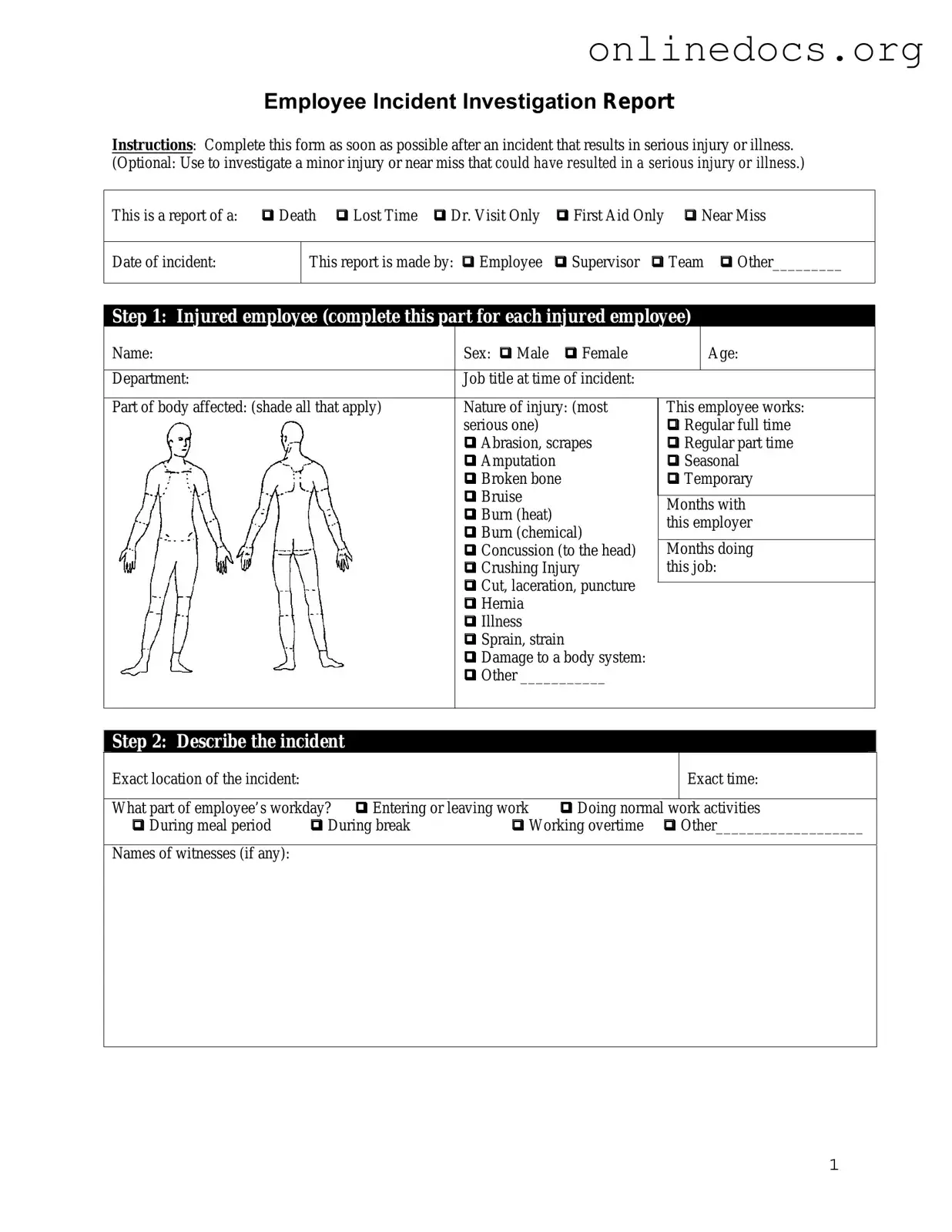The first document similar to the Employee Accident Report form is the Incident Report. This report is typically used to document any event that could potentially harm individuals or property. Like the Employee Accident Report, it captures essential details such as the time, date, and location of the incident. Both forms emphasize the importance of factual accuracy and thoroughness in reporting, ensuring that all relevant information is recorded for future reference and analysis.
For those looking to document the transfer of a trailer, it is essential to utilize the correct paperwork, such as the https://californiapdfforms.com/trailer-bill-of-sale-form, which ensures all necessary details are included for a smooth ownership transition and proper registration.
Another comparable document is the Workers' Compensation Claim Form. This form is specifically designed for employees seeking compensation for injuries sustained while on the job. Similar to the Employee Accident Report, it requires detailed information about the incident, including the nature of the injury and the circumstances surrounding it. Both documents serve as crucial tools in the claims process, facilitating communication between employees, employers, and insurance providers.
The Safety Incident Log is also akin to the Employee Accident Report. This log serves as a comprehensive record of all safety-related incidents within a workplace. Much like the Employee Accident Report, it includes details about the incidents, such as what happened, who was involved, and any follow-up actions taken. The primary purpose of both documents is to identify patterns and areas for improvement in workplace safety practices.
Lastly, the Near Miss Report shares similarities with the Employee Accident Report. A near miss refers to an incident that could have resulted in injury or damage but did not. The Near Miss Report captures details about these incidents to prevent future accidents. Both reports focus on identifying risks and implementing safety measures, highlighting the importance of proactive safety management in the workplace.
